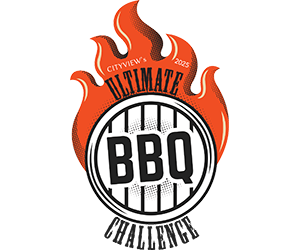Celebrating the harvest
10/4/2017Iowa’s role in the tradition, religion and transition of the crops
 An overwhelming percentage of the counties in Iowa peaked in population more than 100 years ago. In this state, the 20th century was a time of wild transition as people moved from farms to towns, cities and suburbs. The average Iowan is now four generations removed from a family farm.
An overwhelming percentage of the counties in Iowa peaked in population more than 100 years ago. In this state, the 20th century was a time of wild transition as people moved from farms to towns, cities and suburbs. The average Iowan is now four generations removed from a family farm.
World agriculture in a microcosm
Nowhere is this more obvious than at the Old Threshers Reunion in Mount Pleasant each Labor Day weekend. Thousands of people come each year from all over the world to visit with a huge display of the machines that changed farming and farms, (and, curiously, printing) mostly between 1930 and 1960. The event particularly celebrates the era of the steam engine and the introduction of electricity on farms. Grandparents and great grandparents come with children who cannot imagine life without electric machines. One nonagenarian told us, a few years ago, that she thinks these machines are “old friends who made life easier than I had ever dared dream.” A thresher incidentally is a person or machine that separates seeds from plants. When humans did this, they did it by beating the crap out of plants. Not a fun job.

“Three Round Bales” by Michael Johnson courtesy of Olson-Larsen Galleries.
Iowa, at 171 years of age, represents the history of world agriculture in a microcosm. The last 170 years here saw unprecedented gains in agricultural productivity, freeing people to do other things than work at farming. Worldwide, that trend began in the 16th century with the introduction of enclosure, mechanization, crop rotation and selective breeding of plants and animals. The production of wheat went from 19 bushels an acre to 30 bushels an acre between 1720 and 1840, changing history and driving the Industrial Revolution. Before then, most people believed that Robert Thomas Malthus was right in his 1793 prediction that the world was doomed to mass starvation because population growth would outpace agricultural growth.
In Iowa things changed even more dramatically around 1901 when Dan Albone invented the gas-powered tractor. In a few decades, draft animals were replaced by machines on farms. That also freed crops for human consumption. Before tractors and harvesters, most grain was grown to feed and fuel draft animals. Ironically, the ethanol movement has reversed history by redirecting the use of grain back into fuel rather than food.
Traditions of the harvest
Because so many Iowans are now displaced from the farm, the state lacks the great traditions of the harvest that consumed Iowa towns in the late 19th century. Captains of industry and presidents of United States journeyed to Sioux City between 1887-1891 to see the annual corn palace festivals that celebrated harvest with massive constructions made of corn. One existing corn palace in Mitchell, South Dakota, draws as many as half-a-million visitors a year but does not redo its façade in years of bad harvests.
Despite the fact that most Iowans are now urban or suburban, and that Iowa industry now markets twice the value of Iowa agriculture, harvest probably has the biggest impression of all on Iowa’s economy. As outgoing Secretary of Agriculture and Land Stewardship Bill Northey puts it, “Iowa harvests have a significant impact on the economics of Iowa. Iowa harvests $12-17 billion of corn and soybeans each year. Crops’ size and prices makes billions of dollars of impact to farmers and their ability and willingness to buy goods and services from other Iowans. So Iowans, on and off the farm, are impacted significantly by each year’s harvest.”
Iowa frequently leads the nation in corn, soybean, egg and hog marketing, and it ranks third in total livestock sales. Iowa’s forests produce hardwood lumber, particularly walnut. Most of these products (other than eggs) are harvested at the same time each year in autumn. The word harvest derives from an Old English word that meant autumn. Harvest celebrations are ancient and, until recently, religious.
The harvest and religion

Iowa harvests $12-17 billion of corn and soybeans each year. Photo by John Gaps, courtesy of the Moberg Gallery.
Harvest was a life-or-death event for most of human history, and almost everyone thought it was a good idea to have God on your side. Jeremiah warns, “The harvest is past, the summer is ended, and we are not saved.”
Mark is more hopeful: “The kingdom of God is as if a man should scatter seed on the ground. He sleeps and rises night and day, and the seed sprouts and grows; he knows not how. The earth produces by itself, first the blade, then the ear, then the full grain in the ear. But when the grain is ripe, at once he puts in the sickle, because the harvest has come.”
Psalm 67 is much graver: “May the nations praise you, O God. Yes, may all the nations praise you. Then the earth will yield its harvests, and God, our God, will richly bless us. Yes, God will bless us, and people all over the world will fear him.”
One of Thomas Hardy’s greatest poems is “The Harvest Supper,” and it does not have a happy ending either. Hardy wrote a lot about harvest festivals, particularly in his novel “Far from the Madding Crowd.” That was written in 1850, just about the time when the mass exodus from rural to urban places began in earnest. Twelve years later, Christina Rossetti’s masterpiece “Goblin Market” turned harvest into a blasphemous sexual metaphor that would have gotten her beheaded a hundred years earlier. America’s true harvest festival, Thanksgiving, has now become a secular holiday stripped of its religious origins and connection to harvest. The average nation now acquires two-thirds of its food from other countries.
Harvest festivals still have religious meaning in non-Christian countries. Asia, with an abundance of different crops and climates, has one just about every month. Makar Sankranti, Pongal, Uttarayana, Lohri and Magh Bihu are all held in January. Holi is in February and March. Vaisakhi is in April and Onam in August and September. China’s Mid-Autumn Festival is probably the largest in the world. All these are harvest festivals and great fun, maybe because Asian gods don’t require subjects to fear their wrath.
The happiest harvest in America
In early September, CITYVIEW visited California’s hottest wine appellation, in both prestige and temperature, to observe what might be the happiest harvest in America. Because it was a very hot summer in Lodi, harvest was several weeks earlier than usual. Almost all white grapes had been picked in August, and the reds were coming
down fast. So much was happening at the same time that some growers were paying laborers $400 a day and still couldn’t find enough help.
Harvest festivals for wine are among the oldest in the world, inspiring great tales in Greek and Persian mythology. Lodi’s Wine Festival celebrates harvest in September and is a tourism boost to hotels as far away as Sacramento (45 minutes) and Stockton (half an hour). At Lucas Winery, owner David Lucas explained that his organic vineyard requires hand harvesting, bug eating bugs, pruning four times a year, and luck.
“A hailstorm in 2015 took 80 percent of my zinfandel (grapes),” he said. He prunes the vines to achieve a unity of ripeness. “We cut out the green fruits when others are getting darker and we cut out the weak shoots because they will stay short and become black instead of red. It makes me sick sometimes to see all that dead fruit on the ground.”
The University of California Davis helps him with organic technologies such as destroyer lady bugs to kill mile bugs and terminator mites that kill spider mites. “The first night we introduce them you can’t even sleep. It sounds like gunfire and cannon balls in the vineyard,” he recalled, smiling.
Lucas only produces 2,200 cases a year, so organic grapes are manageable. At Michael David Winery, a million cases a year are produced. The most famous are 7 Deadly Zins and Freak Show cabernet. When we visited, owner Michael Phillips said he was in harvest mode for his reds, a full month earlier than Lucas planned its Zin harvest. Large crews were busy working extra shifts.
“We are the largest winery that hand harvests,” he said, though only a percentage was being done that way.
Harvest festivals for wine are among the oldest in the world, inspiring great tales in Greek and Persian mythology. Lodi’s Wine Festival celebrates harvest in September. One reason that wine harvest is so gleeful dates to Prohibition. The only way that vineyards in Lodi stayed in business was by selling grapes directly to individuals because they were allowed to make 200 gallons of wine a year for personal consumption.
In Lodi we also visited Olive Drop farm where owner Karen Chandler harvests her fruits black, meaning later in the year — November to March. She is better able to find labor then, when all the grapes are in. About 25 workers will pick her olives which will all be cold pressed within 24 hours. Chandler only began harvesting olives in 2006 but has grown so fast her product is now in Trader Joe’s stores. All her black mission trees produce extra virgin oil. Two years ago she was outbid on a grape vineyard that borders her property.
“It went for $250,000 an acre. You can’t touch it for that now,” she explained.
Why not Iowa?
Iowa, where farmland sells for an average of less than $5,000 an acre, and even prime farmland rarely goes for more than twice that, produces a tenth of the nation’s food. Isn’t that alone worth a big party for harvest? Des Moines holds a festival nearly every weekend of the summer. Most celebrate one minority or another. Farmers are our most productive minority of all. So why have we forsaken harvest festivals?
A large part of this disrespect comes from farming’s bad image among nonfarmers. Iowa’s most famous writer, Bill Bryson, made his reputation by treating Iowa farmers like the worst kind of Hollywood cliché of them. He portrayed them as rubes who flocked to Merle Hay Mall to ride the escalator up and down, and as people who could not answer a question without sticking a finger in their ear and twisting it.
A lot of farming’s image problem is a result of its miraculous success. The Green Revolution is credited for saving a billion people from starvation but at a cost that no longer seems worth it to some people divorced from farming. It was driven by Iowan Norman Borlaug, and involved the development of high-yielding varieties of cereal grains, expansion of irrigation infrastructure, modernization of management techniques, distribution of hybrid seeds, synthetic fertilizers, genetically modified seeds, synthetic nitrogen, and pesticides to farmers around the world. It increased food production and crop yields dramatically, at least until weeds and pests began developing resistance to the poisonous chemicals. Rice and corn yields have been stuck at the same level for more than two decades now. (Wheat is doing way better.)
It also created unsustainable farming. Instead of saving a portion of their seeds to replant the following year, farmers were prohibited to reuse trademarked seed brands they did not buy new each year. Water ways were polluted by chemical run-off, and a dead zone developed in the Gulf of Mexico. That reached record size last year. Hog confinements bred too much manure to be manageable, creating bad neighbors in stark contrast to the farmers of Old Threshers days. Last month satellite imagery revealed as many as 1,000 livestock confinements in Iowa that were previously unknown and unregulated.
The World Food Prize, created to honor Borlaug and achievements making food more accessible, has even lost some luster because many people think it often honors achievements that make farming less sustainable. The problems are not all with megafarms either. The U.S. Census reported that small farms (producing less than $5.000 in sales a year) account for half of all farms and produce just 1 percent of the nation’s food. Farms doing more than $500,000 a year in sales account for 5 percent of all farms and produced 74 percent of the food (2007 survey). Also, their report cited that the small farms made considerably more money (90 percent of all income) from government payments than crop sales.
The return of a happy harvest?
In Lodi, some old zinfandel vines have been producing grapes for 150 years or more. Only in the last quarter century have most farmers there become winemakers. Because they already owned valuable property, borrowing to buy equipment and add value to their land was easy. Maybe it would make sense in Iowa for an organic corn farm to do the same thing with beer, vodka, gin or whiskey?
That could bring back the harvest festival here in a happy way. ♦

















I am constantly dismayed by the claims of “renewable energy ” coming from ethanol fuel advocates. When Iowa’s average topsoil depth now is half of what it was when we first started farming in the state it is evident that topsoil is a consumable resource, not a self-sustaining one, the way farming is currently done.